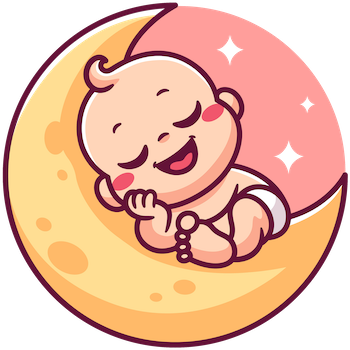Parenthood can often feel like an overwhelming maze of advice and opinions. When it comes to managing a pacifier and deciding when to wean, parents find themselves trapped between conflicting recommendations. Some experts suggest children should relinquish their beloved pacifiers by age one, while others advocate for a more organic approach, allowing kids to shed this comfort when they feel ready. As a parent, it’s essential to recognize that every child is a unique individual, and what works for one might not suit another. Discerning the best path forward starts with understanding the nuanced effects of pacifier use.
Pacifiers can offer significant benefits early in infancy. From fulfilling a baby’s innate need to suck for comfort to reducing the risk of Sudden Infant Death Syndrome (SIDS) during sleep, these little gadgets serve valuable purposes. Research has shown pacifiers also provide relief during minor medical procedures and may shorten hospital stays for preterm infants. However, as children grow, concerns arise around prolonged pacifier use, which can lead to potential dental issues and infections. Striking the right balance is essential as we navigate this stage of development.
The Potential Downsides of Prolonged Usage
While the initial benefits of pacifier use are undeniable, it’s crucial to remain vigilant about the potential drawbacks that can surface over time. Pediatric research has articulated the possibility of early weaning from breastfeeding as a consequence of pacifier reliance, prompting recommendations from health professionals to introduce these soothers only once breastfeeding is well-established. The long-term effects also raise eyebrows—overuse beyond two years could lead to dental misalignments, and studies show a marked increase in such issues if pacifier reliance persists past age four.
Moreover, hygiene is a concern; a study found alarming rates of bacterial and fungal contamination in pacifiers, with latex varieties being particularly susceptible. If your little one has frequent ear infections, you may also want to consider the link some research suggests between pacifier use and these illnesses. Therefore, it’s paramount for parents to critically assess the ongoing impact of pacifier usage as their child matures.
Strategies for a Smooth Transition Away from the Pacifier
When the time comes to wean, the approach significantly influences both parent and child’s experience. An organic, child-led strategy tends to lessen stress and foster a sense of security. Most children naturally begin to self-wean between ages three and four, and parents often find that those who have not been forced to abandon their binkies find comfort in knowing their child will relinquish it at their own pace. However, if your child is older or problematic behavior emerges (like persistent nighttime awakenings), a different approach may be warranted.
A more playful tactic is involving the whimsical concept of a “Binky Fairy,” who swoops in to collect pacifiers as a rite of passage—a magical farewell. Parents have reported success, noting that their little ones quickly embraced this narrative, approaching the event as an adventure rather than a loss. Incorporating this imaginative element not only eases the transition but also nurtures creativity and fosters a sense of agency in children.
Alternatively, parents may resort to methods that involve gradual reduction, such as limiting pacifier use to sleep times. Commencing with bedtime, parents can slowly phase out binkies from naps and ultimately night sleep, driven by the child’s readiness. Patience is key here; following this slow progression nurtures emotional resilience and paves the way for smoother transitions.
Choosing What Resonates with Your Parenting Style
At the core of this weaning journey rests the significance of kindness, empathy, and confidence. An empathetic ear and assurance can make a world of difference during this emotional milestone. Each child responds differently, meaning there’s no universally right or wrong method. Whether embracing the fairy tale approach or adopting a slow withdrawal, the guiding principle is to ensure the outcome aligns with your values as a parent.
Ultimately, the process of weaning off a pacifier should resonate with you and the unique personality of your child. Embrace the narrative that suits your family’s ethos, and trust in your ability to navigate this chapter with grace and assurance. The path may be challenging, but with kindness and self-belief, you’ll help your child emerge from this phase ready to tackle their next big adventure—one binky-less night at a time.

